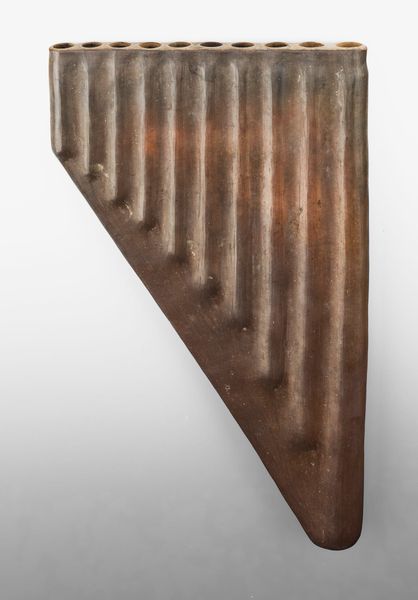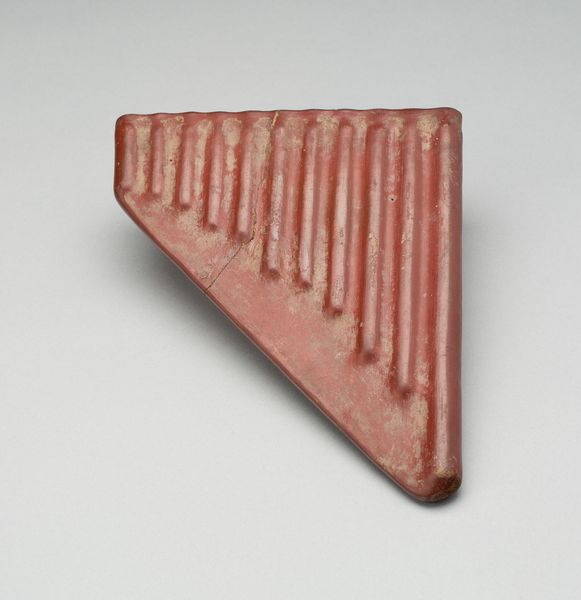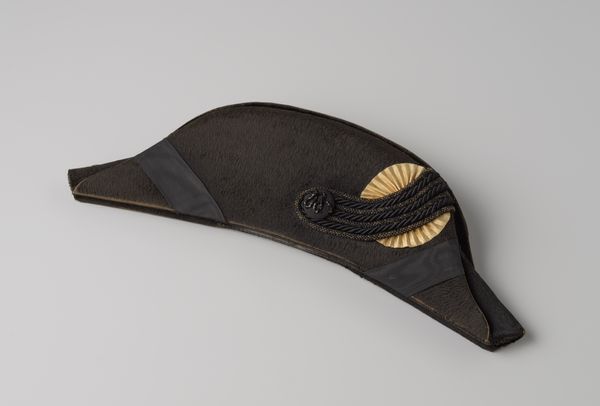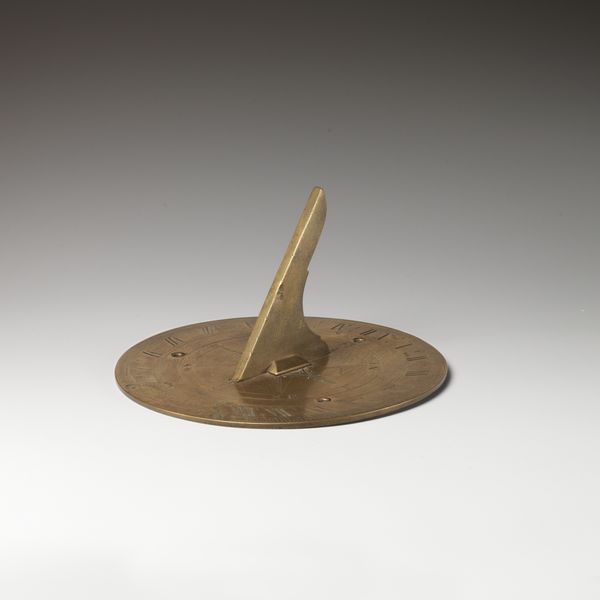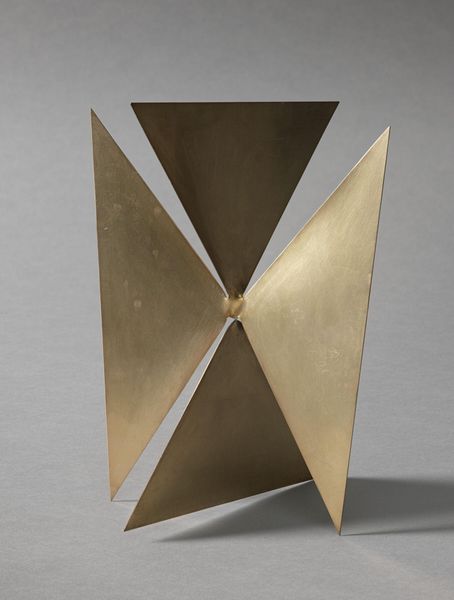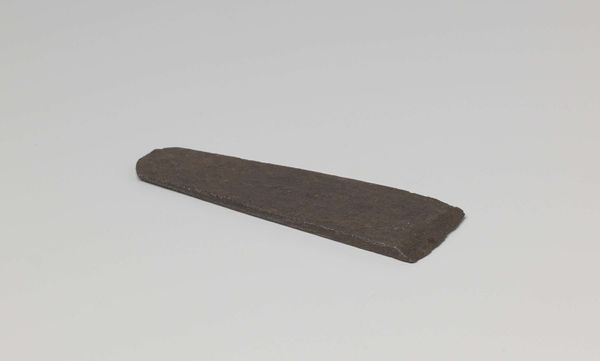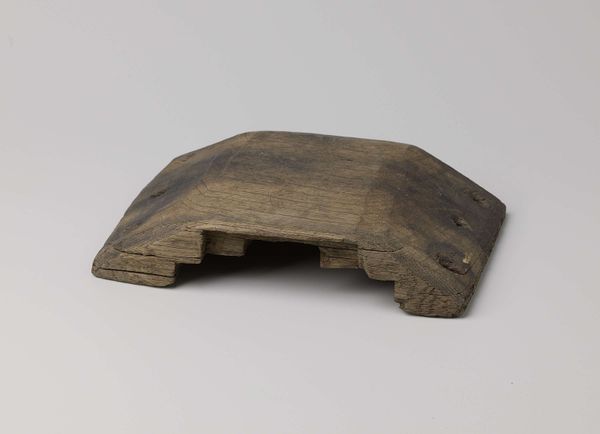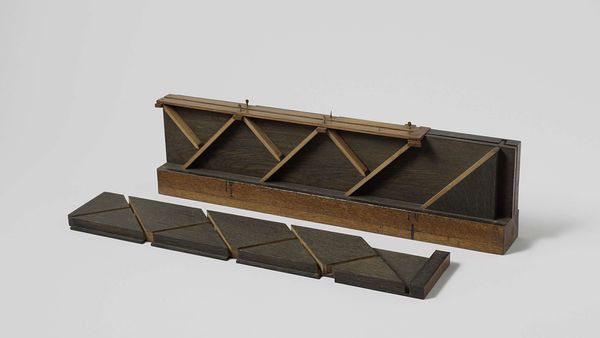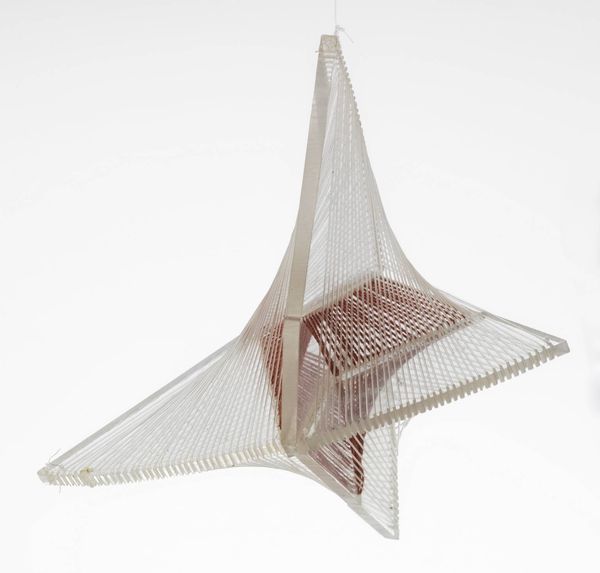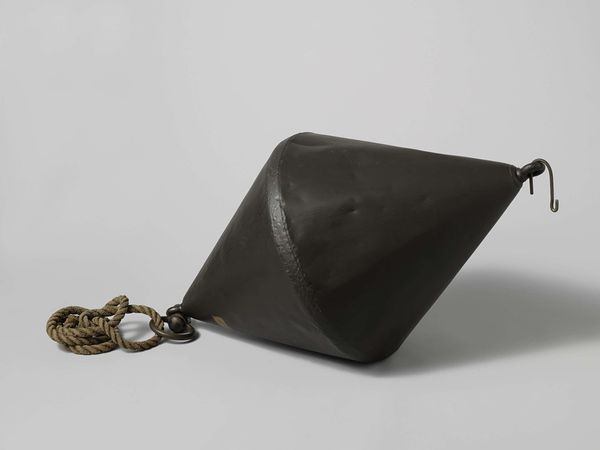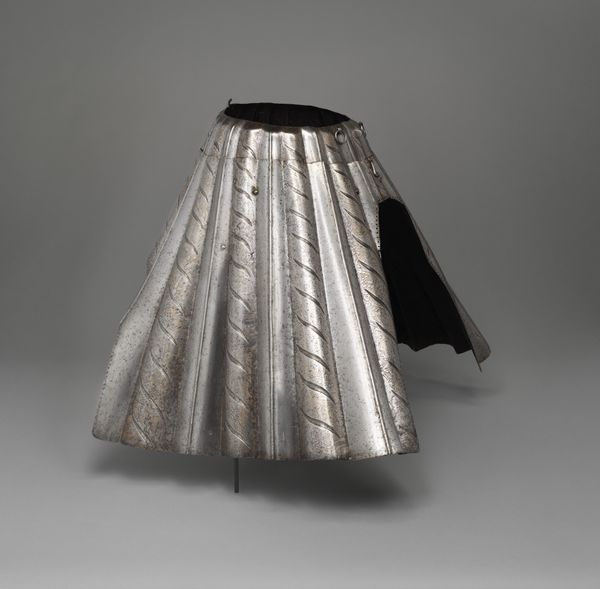
ceramic
#
ceramic
#
indigenous-americas
Dimensions: 12.1 × 11.4 cm (4 3/4 × 4 1/2 in.)
Copyright: Public Domain
Curator: Here we have a Nazca ceramic panpipe, crafted sometime between 180 and 500 AD. The even rows of what I assume are pipes strike me as geometrically impressive, almost echoing a modernist aesthetic centuries before its time. Editor: Yes, there's a remarkable severity to its triangular form, offset by the warmth of the ceramic material itself. How does an understanding of Nazca society help contextualize an artifact such as this? Curator: The Nazca people, located in what is now Peru, are perhaps best known for the Nazca Lines. This panpipe is another window into their culture. We believe that music, like their elaborate textiles and pottery, played a significant role in rituals and community life. Consider the labor invested in extracting the clay, forming these delicate tubes, and firing them perfectly. Editor: And the uniformity achieved in the shaping is astonishing. To create those even, ridged forms on a slightly concave surface speaks to considerable skill and an intentional formalism. One might explore a link between such deliberate composition and perhaps broader aesthetic systems of the era. What can this instrument, through material analysis, reveal about trade networks, local resources, or even musical theory during the Nazca period? Curator: We're exploring similar questions. Spectrographic analysis of the ceramic, combined with ethnomusicological studies of similar instruments used in Andean cultures today, may give insights into how the Nazca produced distinct sounds, which then tied to their cosmological views. This also hints at the organization of craft production within the society itself, who was in charge of material procurement and artistic direction, so to speak. Editor: Such investigations broaden our perspective. The elegant lines and formal design now connect to more profound dimensions of ancient Nazca society and beliefs. This instrument stops being simply an object, but becomes a key point to broader socio-economic questions about labour practices. Curator: Precisely, that's the power of material culture. By looking closely at process and means, and not just appreciating form, we can better understand lived experience. Editor: A valuable perspective to carry forward as we consider other artworks on display today.
Comments
No comments
Be the first to comment and join the conversation on the ultimate creative platform.
